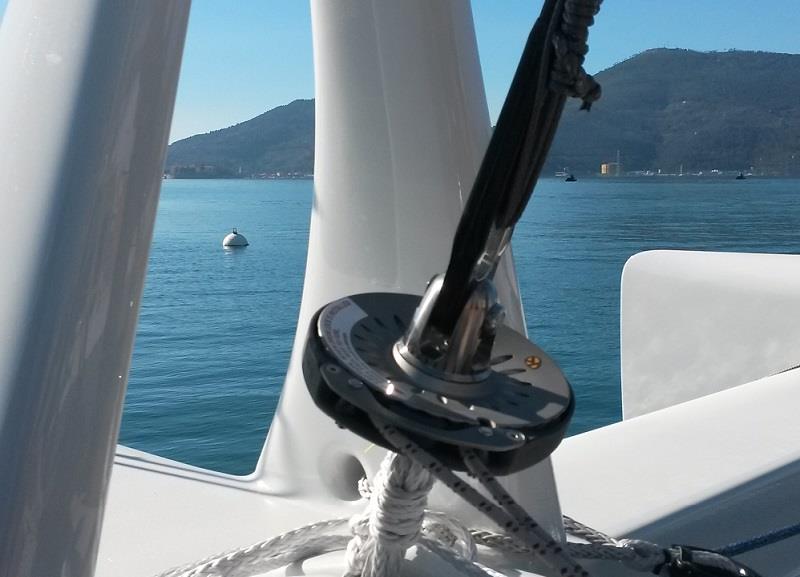
Wire versus Composite Structural Furling Forestays
by Diego Sosa, Upffront 31 Aug 2018 01:00 PDT

Structural Furler © Karver
In a previous blog, we explained what we meant by the term "structural furling forestay". In this article we look at when to use traditional wire vs a composite cable as the torsional stay.
Structural forestay furling systems using a normal wire stay are available on the market for boat lengths of up to approx. 10-11m and a maximum of 7mm wire diameter. If you look closely at the way a wire cable is made, it is wound in a spiral which lends itself quite nicely to handle torsional furling loads.
It should be noted that wires must be furled in one direction only. This is no different to composite cables, which rely on off-axis braid fibre alignment for their torsional strength / stiffness. For optimum performance any furling stay (wire or composite) should only be furled in a single direction.
At the upper 7mm wire limit, a Dyform wire construction is preferable as this has a much more robust construction with fewer individual wire strands which are prone to break, resulting in potential tear hazards on standard 1x19 wire.
(N.B. we have supplied 8mm Dyform structural furling forestays but halyard swivels are not available at this size which means the genoa is permanently lashed at the head.)
Above 11m boat length and 7mm wire diameter most manufacturers recommend a switch to a composite torsional cable as the structural furling forestay.
Benefits of wire structural forestays
Re-use existing forestay
Your existing forestay can normally be used in the new system with a
small length adjustment, which can be done by any good local rigger
Cost
Because you are re-using your wire forestay, costs are kept to a
minimum
Hanks on the luff as before – the only modification that may be
required is a small shortening of the luff length
Halyard swivel
Halyard swivels are readily available for wires sizes from 5-7mm
This means you can use your existing genoa halyard system
It also means the genoa can be hoisted / lowered as usual
Windage
A wire forestay will be smaller diameter that the composite
equivalent which means better upwind performance.
Although there is a trade-off between weight and windage
Benefits of composite structural forestays
Weight
A composite stay will normally be 70-80% lighter than the wire equivalent
Wear
A composite cable is kinder on your sail during the furl
Strength
Composite structural rigging cables are specified based on stiffness, so that the mast behaves in the same way regardless of rigging material. As a by-product of specifying based on stiffness, the strength of a composite cable is generally 3-4 times stronger than the equivalent wire, thereby increasing safety factors
Custom torsional stiffness / strength
The torsional stiffness and strength required to effectively furl a sail varies depending on sail area, and designed max wind speed of the sail
Composite structural cables are custom designed, and the torsional stiffness can be varied depending on the specific requirements of the boat and sail.
Conclusion
Wire structural furling forestays are common on dinghy's / sports boats and there are many, simple, lightweight and competitively priced systems available on the market for 3-5mm diameter wire.
5-7mm diameter wire sees a transition to keelboats from approx. 23ft – 34ft where all the specialist furling manufacturers offer wire furling forestay solutions.
8mm wire is the transition. It is still feasible to operate a wire furling forestay but this is the point most manufacturers recommend a transition to composite forestays
If you have a 10mm diameter wire forestay or bigger (38-40ft+ boat), then you will require a composite torsional cable to handle the torsional loads required.
Q: Could you use a composite forestay on a 27ft boat with a 6mm forestay?
A: You could but it is generally cost prohibitive. The cost of a custom torsional cable (at this size) normally doubles the cost of the package!
If you would like to know more about structural furling forestays download our "Furling System - Overview" document.